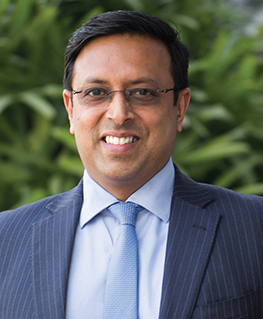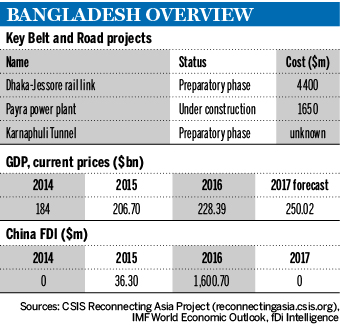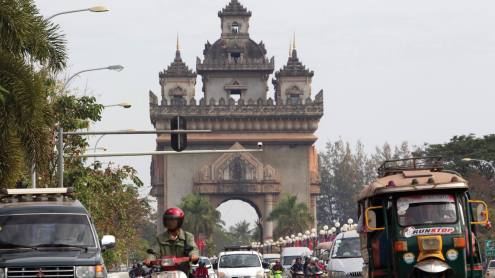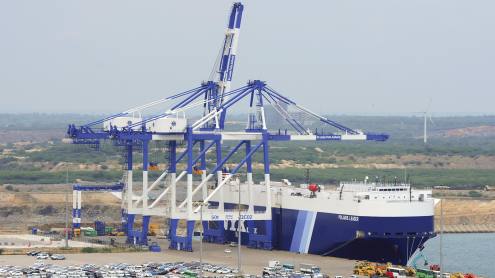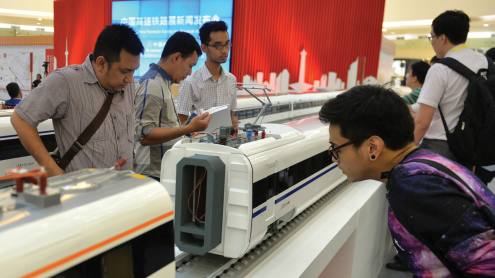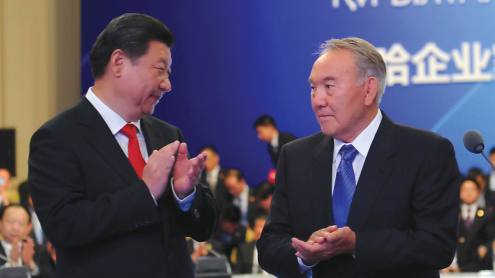Bangladesh has established several infrastructure projects under China’s Belt and Road Initiative (BRI), boosted by Chinese president Xi Jinping’s momentous 2016 state visit – the first to Bangladesh in 30 years by a Chinese head of state.
Market participants argue the two countries make a good fit as partners. “China has overcapacity onshore and it’s not growing as fast as it did in the past, so it would require external demand to support its production. Countries such as Bangladesh, which is growing at 7%, will have that demand,” says Naser Ezaz Bijoy, CEO at Standard Chartered Bank Bangladesh.
Slowdown noted
But after an initial spike in BRI-related activity, progress in construction has slowed. “It started off pretty well but while it’s a bilateral initiative, it’s not really just bilateral. There are other geopolitical issues that can play a part in actual execution. We see a bit of a slowdown,” says Mr Bijoy.
India, Bangladesh’s largest neighbour, openly rejects the BRI on the basis of sovereignty infringement caused by China’s projects in Pakistan. So are Bangladeshi authorities concerned about an Indian backlash?
Abul Maal Abdul Muhith, finance minister of Bangladesh, is not worried. “We have a lot of [links with] India. The Asian Development Bank’s South Asia Subregional Economic Cooperation [Sasec] initiative is going very well,” he says, referring to a programme aimed at boosting regional growth among Bhutan, India, the Maldives, Myanmar, Nepal and Sri Lanka. “We are already beneficiaries of Sasec in terms of importing power from India. These imports will increase further,” adds Mr Muhith.
BRI projects
The Center for Strategic and International Studies’ Reconnecting Asia Project, which maps infrastructure projects across the region, has identified three key BRI initiatives in Bangladesh: the Dhaka-Jessore rail line, the Payra power plant and the Karnaphuli Tunnel, the country’s first underwater tunnel.
Construction has kicked off for the $1.65bn coal-fired power plant by the port of Payra. The plant is a joint venture involving Chinese power company CMC and Bangladesh’s state-owned North-West Power Generation Company. While the equity will be split in half, the project’s financing is fully provided by China. The plant is scheduled to be operational by December 2019.
Meanwhile, the $4.4bn Dhaka-Jessore rail line is still in the preparatory phase. Announced in 2016, the line should launch in 2022. State-owned China Railway Construction Corporation is the project’s contractor.
The construction stage for the Karnaphuli Tunnel is less clear. State-owned China Communication Construction Company signed a $705m contract with the Bangladesh Bridge Authority (BBA) in 2015. But in November 2017, Bangladeshi newspaper Financial Express reported that construction works had not started because the BBA was waiting on the Export–Import Bank of China to release funds for the project.
Bank participation
Chinese development banks tend to dominate BRI projects’ financing while Chinese contractors often take over the construction process. But Bangladeshi lenders with strong trade finance or cross-border business can benefit from the BRI by offering bank guarantees or account bank services.
This is largely the case because Chinese firms that win bids for BRI projects tend to sub-contract Bangladeshi corporates. “[Chinese firms] cannot bring all the labour and equity together,” says one Dhaka-based banker.
Standard Chartered’s Mr Bijoy says commercial banks are not best placed to do large, long-term financing for infrastructure projects anyway, as “[the] depth of long-term liquidity, especially in foreign currency, is not significant in Bangladesh”.
“Commercial banks can arrange syndicated project financing with the participation of multilaterals and other international lenders under risk mitigation programmes such as export credit agencies,” he adds.
Standard Chartered Bank Bangladesh is the account bank for the Payra power plant project. Meanwhile, local lender Eastern Bank is financing a railway project connecting Chittagong to Cox’s Bazar – a line that is set to be part of the Trans-Asian Rail Route, connecting Bangladesh to countries including China, Myanmar and Thailand. While it remains unclear if this line is officially a BRI initiative, it does fall within the remit of the Chinese initiative. What is more, Bangladeshi and Chinese firms have set up two joint ventures to build part of this project.
Meanwhile, banks that are heavily focused on the local market are less likely to be involved in BRI projects. “This is not a matter of discussion for now. But if a proposition comes to us, we can consider it,” says Abul Kashem Shirin, managing director and CEO at Dhaka-based Dutch-Bangla Bank.



